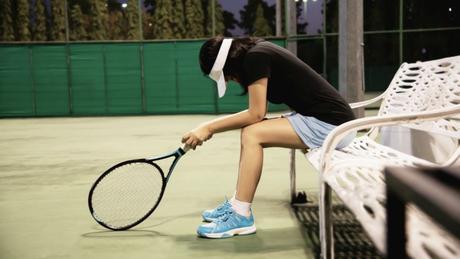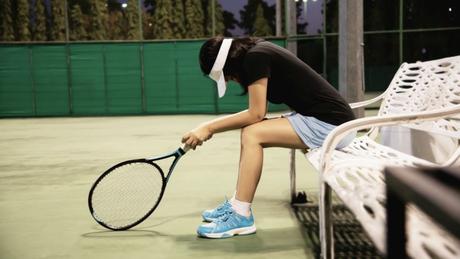No doubt, tennis demands great efforts and time from a player. Besides hardworking and practicing for months and years, we still face many unforced errors in tennis that are, sometimes, a little bit tough to tackle. So, it is very important to avoid all those errors to improve our tennis skills further.
Although we can't completely eliminate unforced errors, we can try our best to minimize those errors to as much extent as we can to increase our chances of winning on the tennis court.
This is what we are going to learn and explore through this article, stay with me!
Generally, players, especially juniors, are not aware of these errors in the beginning. So, being a tennis coach, I feel like the duty to share all of my experiences with new players so they can achieve their goals in a shorter period of time.
A good coach will always help you to tackle these errors and teach you different tactics. What I am trying to say is that unforced errors can be minimized by a lot of practice.
Besides, there are many reasons for unforced errors due to which a player loses his game. Sometimes, we even find it difficult to differentiate between forced and unforced errors.
Let's explore what unforced errors are really in tennis.
Forced vs. Unforced Errors - What's the difference?


Generally, it is a little bit difficult to make a difference between force and unforced errors in tennis by beginners or even intermediate-level players. Because these terms are quite confusing to differentiate.
However, to avoid these doubts, a clear difference between forced and unforced errors is explained.
-
Forced errors: The forced error is considered the error caused by missing the shot by the opposing force. In simple words, it means that the shot may be great from your opponent's side, that there left little expectation that it would be back to play.
In addition, it is not easy to mark a shot as an error by 1st player unless he gave the reasons why the shot is an error by 2nd player.
In this case, forced errors are quite important for the winning player. In other words, the winner in tennis is selected when 1st player hits a shot on which the 2nd player does not put down the racquet.
-
Unforced errors: On the contrary, unforced errors are those in tennis that are not forced by an opponent player's shots. However, in official tennis matches, the statics recorder tries to determine whether the mistake made by the player is forced or unforced.
So, in this case, if any player has balanced himself for the shot and gets enough time for the normal stroke, but still he makes a mistake, then the error is counted as an unforced error. The player does not need to blame himself for the unforced errors.
Because these errors happen mostly due to the demands of complex sport or may be due to mental lapses. In addition, there is no authentic point that the errors made by a player are its stupidity.
Forced or Unforced Error - How to Decide?
As we all know, tennis ends with a winner, a forced error, and an unforced error. To make a clear difference, recording the forced errors is relatively easy. The only way to decide that the shot by the player is a forced error or unforced error is only your expectation.
On the contrary, if you think that the shot is missed, then the shot is an unforced error. On the other hand, if the 1st player misses his last shot because the shot of 2nd player was great, then undoubtedly, it is a forced error.
In addition, we can claim that a shot is forced for the following reasons;
- if the 1st player hits a strong shot and forces the 2nd player to miss his shot. In addition, it can be said that when the amazing shots come from the opponent player, then the 1st player gets a stroke of offensive bad luck.
On the contrary, it is difficult to decide on unforced errors in tennis compared to the forced errors. However, the easy way to claim an unforced error only if the player has enough time to set up for the shot but still misses it. Then undoubtedly, the shot is pointed as an unforced error.
Furthermore, the major reasons behind the unforced errors are bad contact, shot selection, or maybe the player is not prepared mentally. Further, a player may lose a point by making a mistake while playing to have full control and energy. So, the notion of unforced error is quite problematic in marking it as an error or not.
Causes of Unforced Errors in Tennis
To understand the unforced errors better, players of all levels need to know the causes of unforced errors in tennis to overcome them. The most important point is that every tennis coach will tell you to play continuously rather than perfectly. As it is unbelievable that the players or beginners make zero mistakes.
That's why coaches prefer continuity rather than perfection because perfection is not easily attainable for imperfect humans. So, the major causes of unforced errors are listed below:
- The first important cause is that a player may lose focus of the ball. The reason is that a player may focus on the wrong side of the ball while hitting.
- Secondly, a player may be afraid of the opponent player. He may be afraid of winning or losing the game. That's why it is advised by coaches to play with relaxation because winning or losing are the parts of any game.
- Thirdly, less confidence is another primary reason for unforced errors in tennis. If a player doubts his playing abilities, he may miss the shot because he/she is mentally ready to lose the game.
- Mental causes are the main reasons for unforced errors. Less focus or thinking about different techniques will never let any player hit a shot perfectly.
- Another cause of unforced errors is the player's mood. While playing, he/she might be upset, angry, or frustrated. That's why, despite having enough time, he cannot play well and make unforced errors.
- Next, the risk involved in hitting a shot is another cause of unforced errors. While playing, the goal of winning should never be missed.
On the contrary, all the lapses mentioned above never let you focus on the ball while trying to hit it. In addition, these lapses are not easy to eliminate. But the training coaches always taught players to manage their emotional or thinking state in the game. In this way, a player can decrease his mental lapses.
How to reduce unforced errors in tennis?
It is estimated that almost 60 percent of tennis points fall on unforced errors. However, these errors decrease or increase the chances of winning-that's why it is important to reduce these unforced errors for future safety. In addition, the easiest way to reduce the frequency of unforced errors is to practice more and more.
For more practice, I have 50+ tennis drills for you that you can practice to further reduce the chances of tennis unforced errors.
Here are some ways which are helpful for you to reduce the unforced errors in any situation of the game:
1. TopspinMainly, topspin increases the margin of errors in tennis. The reason is that topspin causes a downward force on the ball. That's why the ball drops with the interaction of the air. In addition, topspin brings the ball down so a player can hit hard on strokes if his/her tennis tactics are good enough.
That's why spinning more and more is a very effective way to reduce all the unforced errors and decrease the percentage error of any players.
2. Hitting the ball in the cross-courtUsually, players question that how hitting cross courts helps minimize the errors in the tennis game? It is not a good way of hitting cross-court all the time in the game. For this, a player must keep his strokes cross court.
Further, the player must go for the opportunity of hitting only when you smell it. Above all, this fact will help the players or juniors to remove maximum unforced errors.
3. Hitting over the center of the netHitting over the center of the net is one of the effective ways to reduce unforced errors in tennis. Although, the net of the tennis game is a little bit lower in the middle. So, stopping the strokes going in the net center is the best way to reduce the percentage errors.
By hitting over the cross center, a player also stops his/her opponent from moving angled shots towards you. In this way, a player can reduce his errors by making errors for the opponent.
3. Control your powerSuppose a player feels that his shots are going far and long-distance, then he must reduce his power of playing. In addition, it is unnecessary to make your balls going far when a player is not hitting the topspin. So, you need to reduce the power that you are putting on the ball. Generally, advanced-level players can generate more power on their own.
By controlling your power, you gain more control over your shots. That's why reducing your power while playing tennis helps reduce unnecessary unforced errors.
4. More Space:Mainly, a player can increase his consistency by hitting shots inside the sideline and baseline. However, sometimes players try to shot for these lines too much. Unfortunately, it is the only way for players to lose as fast as possible.
To avoid these unforced errors, a player must pick a safe target before hitting a stroke. In this way, you give your opponent a chance to miss shots and make your opponent run faster.
How to use forced tennis errors against your opponent?
Now coming to an interesting point, which is how can you use unforced errors in your favor and defeat your opponent.
So, the main idea is to make your opponent uncomfortable in the same way as I have discussed in my article on tennis doubles strategies. Secretly, it is an effortless and tested way to win the game. If you win a point because of forced errors, all the credit goes to your efforts.
Remember, it's not easy to make your opponent uncomfortable, after all, he/she is also an experienced player who has also trained for months or years in the same way you have been doing. So, here you need to practice how to grab the weaknesses of your opponent.
So, here are some of the ways that can help you overcome your opponent.
ConsistencyIf you think that your opponent cannot handle physical or mental points well, then consistency is the best option to use forced errors.
In addition, you must go for extra consistency and give no chance to your opponent to hit a good shot. Your consistency can make a long fight to win for the opponent.
High PowerLike other forced errors, high power is also a very effective way to use forced errors against your opponent. When you hit alternative faster balls to slow balls, you can quickly drive your opponent crazy. With your high power, you demand your opponent an entire focus on the game for the whole time.
The high-power stroke is the best way to use forced errors against your rival.
Control on Depth shotsMainly, if you think that you can easily control the depth shots, you must use depth variety in all the same points. The ability to control on-depth shots can easily make your rival lose the game.
In addition, this tactic will surely reduce the confidence level of your opponent and breaks his game easily.
Time ManagementOn the contrary, taking time away from your rival is always a great idea to make him/her uncomfortable on the tennis court. Further, it does not only break your rival's game but his decisions too.
In addition, by taking the balls early, you can put pressure on the opponent.
Conclusion: Final thoughts on Unforced Tennis Errors
Mainly, tackling up with unforced errors is very important to improve your chances of winning. However, all the ways to differentiate and reduce the unforced errors are detailed above. So, to improve your playing abilities, you must learn all the ways to minimize all the unforced errors because these errors can take you from a low to a high level of success.
All the coaches teach players to work consistently. Because, by making efforts consistent, you can polish your skills and minimize unforced errors. On the other hand, forced errors are easy to determine and polish as compared to unforced errors.
In addition, if you learn to tackle these unforced errors, you can easily use these errors against your rival. In this way, you can enjoy more chances of your success.
I hope you found this article helpful, do share it with your friends and tennis teammates. Or if you have any questions/suggestions related to this article, share them with us in the comments section below.
FAQs 1. What is an unforced error?From the tennis perspective, an unforced error means missing a point just because of the player's own mistakes or blunder rather than the opponent player's high skills.
2. What is a forced error in tennis?A forced error means when a player misses a shot resulting in losing a point just because of the good play by the opponent player. This type of error depends on the level of skills of your opponent.
3. How can I reduce unforced errors?The only way to minimize unforced errors is to practice your game more and more and improve your skills until your strokes become your habits.
On the other hand, if you want to master forced errors to use them in your favor, you still need to practice a lot.
Was this article helpful?

